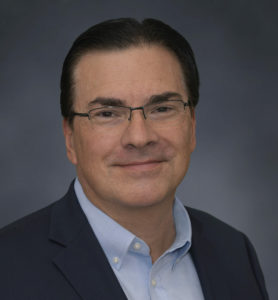
This is an excerpt from a local news story that you never want to see for a skilled nursing facility: “A worker was hurt and several residents were relocated after a dryer at a Lehigh Valley nursing home went up in flames Wednesday morning, authorities said.”
According to the news story, fire crews discovered a fully involved clothes dryer with fire sprinkler activation when they arrived on the scene at 4:45 a.m. at the facility in Bethlehem Township, PA. Authorities credit the facility’s fire sprinkler system and quick response by staff with controlling the incident and providing a mostly favorable outcome.
Fires in healthcare facilities, and particularly those that have historically occurred in nursing homes, have been catastrophic and resulted in multiple fatalities prior to federal regulations requiring the presence of fire sprinkler systems. While these fire protection systems undoubtedly save lives, there is still more that providers can do to prevent fires from occurring, especially in laundry rooms.
Building codes, fire prevention standards and life safety regulations for healthcare facilities enforced by federal, local and state agencies are designed in part to help ensure safety and prevent fires. These rules, including those enforced by CMS and its contractors like the Life Safety Code (NFPA #101, 2012 edition) and the Health Care Facilities Code (NFPA #99, 2012 edition), are highly effective when building operators abide by them to prevent fires.
Adverse incidents like fires happen when operational deficiencies create unsafe conditions that ultimately lead to the ignition of combustible materials.
As a retired deputy fire chief, I responded to several fires in commercial laundry rooms in nursing homes during my 26 years with the fire department in a major metropolitan area. Every one of these fires had one or two common denominators. These same factors are the cause of the majority of fires that occur in commercial laundry rooms today.
Most commonly, fires in the laundry room of a SNF are caused by improper use of commercial clothes dryers. This typically means that items that should not have been placed in the dryer were indeed placed in the dryer barrel and caught fire. Some of these items include microfiber mop heads and mixed loads of materials like rags that were previously saturated with grease, oil or cleaning solutions. The temperatures produced in commercial clothes dryers can bring these combustible materials up to their ignition temperature and subsequently cause a fire within the dryer barrel.
The other common denominator is lack of maintenance. As a former fire marshal and presently as a fire/life safety consultant, it is not uncommon for me to observe lint traps full of combustible material like highly flammable lint.
Additionally, the mechanical areas in the rear and inside of the clothes dryers, including motors, electrical components and piping, near the open flame of a natural gas-powered machine are often covered in lint when not regularly cleaned and maintained. Imagine the area around the gas cooktop in your kitchen at home covered in combustible lint. At some point, a fire is quite possible as heat from the cooking flame will eventually cause the lint to catch fire.
The laundry room is an area of your healthcare facility, similar to your commercial kitchen, that requires vigilance and a strong operational commitment to prevent fires. Policies, procedures and safety protocols should be developed in accordance with manufacturer’s guidelines to help ensure proper operation of laundry equipment. Staff should be continuously trained on these procedures to help reduce the potential for fires.
Lint traps should be regularly emptied and all interior and exterior surfaces should be maintained in a condition that is free of combustible materials like lint. Again, follow the information contained in the equipments’ operating manuals and safety guidelines to help ensure proper operations and a reduced risk of fire.
Some nursing homes have developed a log to document the frequency of lint trap cleaning on a daily basis. While there is no standard for lint trap cleaning, more frequently is better than less frequently. Most commonly, lint traps are often cleaned out every one or two hours. In some cases, providers have a protocol to clean out the lint trap after every load has been dried.
Maintenance and cleaning of other elements of commercial laundry equipment, including the clothes dryers, should be on your facility’s preventative maintenance schedule. This type of equipment is typically inspected and comprehensively cleaned at least on a monthly basis or more frequently depending on use. The more active the equipment is, the more frequently it should be cleaned.
The National Fire Protection Association (NFPA) has produced a one-page fact sheet that can be referenced to ensure fire safe conditions for residential-grade clothes dryers that may be associated with your nursing facility. This information from the NFPA can also be considered to help ensure fire safety in your own home where fires often occur in single-family residences, townhomes and apartment buildings due to lack of cleaning and maintenance of clothes dryers.
While the fire sprinkler system saved the day at the nursing facility fire in Pennsylvania, it is important for your team to learn from these unfortunate incidents and institute the measures presented in this article to reduce the risk of fire in your nursing home’s laundry room.
Stan Szpytek is the president of the national consulting firm Fire and Life Safety, Inc. based in Mesa, AZ, and is the life safety/disaster planning consultant for the Arizona Health Care Association, California Association of Health Facilities (CAHF), Utah Health Care Association and American Assisted Living Nurses Association (AALNA). He is a former deputy fire chief and fire marshal with more than 40 years of experience in life safety compliance and emergency preparedness. For more information, e-mail Szpytek at [email protected].
The opinions expressed in McKnight’s Long-Term Care News guest submissions are the author’s and are not necessarily those of McKnight’s Long-Term Care News or its editors.




